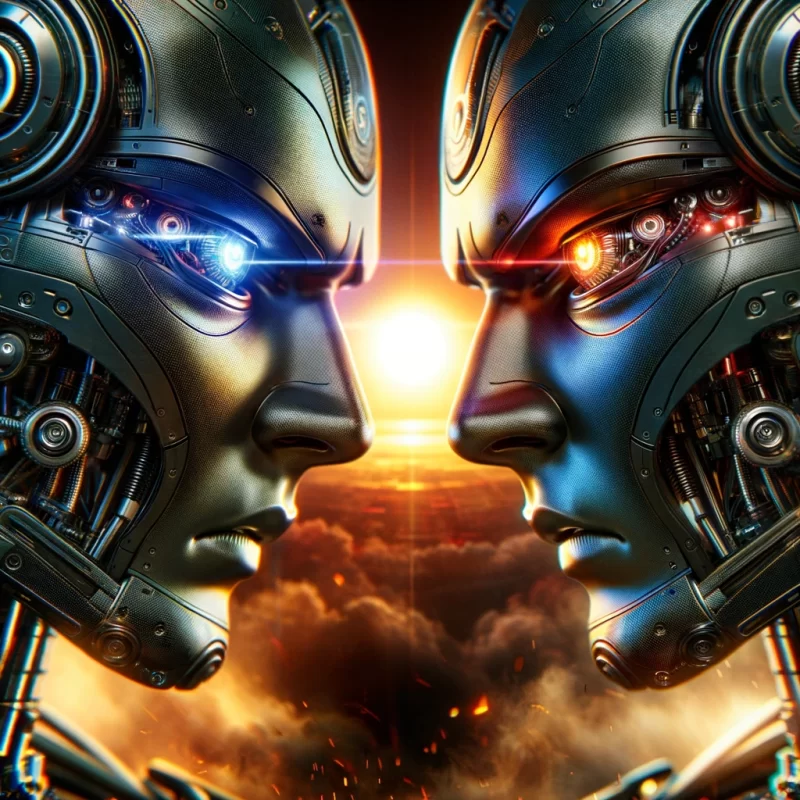Paris-based startup, Mistral AI has recently grabbed the spotlight by unveiling Mistral Large, its advanced language model poised to rival OpenAI’s GPT-4. Mistral AI was emphasizing its dedication to open-platforms but is making a shift change in strategy moving towards a closed system. While its core code and algorithms are not freely available for public use, modification, or distribution, it’s following in the footsteps of other models with an API platform, which suggests a controlled environment where developers can use the model under certain terms but cannot access or modify the underlying code freely, according to their website.
The startup also launched a beta version of its open-source ChatGPT competitor ‘Le Chat’. Mistral is the dark horse.
Following thorough benchmark analyses by numerous specialists, it’s ranked just below GPT-4. The real test of its capabilities will soon unfold as Mistral AI opens its doors for public experimentation. This launch intriguingly coincides with the buzz around Google Gemini, which has sparked a wide range of reactions due to its controversial and sometimes polarizing outputs—seen by some as amusing, by others as concerning, or by others as toootally fine.
Le Chat: A New AI Chat Assistant
In tandem with the introduction of Mistral Large, Mistral AI unveiled Le Chat, a beta version of its chat assistant. This service is initially available for free and features three different models: Mistral Small, Mistral Large, and a concise prototype model named Mistral Next. While Le Chat currently does not have web access capabilities, its launch represents a significant step towards broadening user interaction with AI technologies. The company also has plans to roll out a paid version for enterprise clients, indicating a strategic approach to market segmentation.
Microsoft Makes a Play
Microsoft’s revealed financial involvement with Mistral AI, amounting to a €15 million investment, signifies a deeper commitment to the AI sector. This investment is set to convert into equity in Mistral AI’s next funding round, maintaining the startup’s valuation at about $2 billion since its last funding in December 2023. It will be interesting to see if Microsoft can grab the future of the internet away from Google with stakes in multiple AI ventures.
Azure Distribution Partnership
The collaboration between Mistral AI and Microsoft extends into a distribution partnership for Azure, Microsoft’s cloud computing service. This deal not only broadens Mistral AI’s reach but also enriches Azure’s model catalog, offering customers an alternative to existing AI models, including those from OpenAI and Meta.
EU Regulators are Already Investigating
The investment and partnership between Microsoft and Mistral AI are already on the radar of regulatory bodies. The European Union, already examining Microsoft’s relationship with OpenAI, has indicated that it will also scrutinize this new investment. This regulatory interest reflects broader concerns about the relationships between large tech companies and generative AI companies, highlighting the challenges and considerations that come with the rapid evolution of the AI industry.
Reflecting on the Closed-Source Pivot
Mistral AI’s decision to pivot from an open-source model to a proprietary API platform for Mistral Large marks a significant shift in strategy. This move aligns Mistral AI more closely with the operational models of its American counterparts, diverging from its earlier open-source approach. It raises questions about the future direction of AI development and the balance between open innovation and proprietary technologies within the AI ecosystem.
Conclusion
The developments surrounding Mistral AI’s launch of Mistral Large and its partnership with Microsoft represent a complex tapestry of innovation, strategic alignment, and regulatory consideration. As the AI industry continues to evolve, the dynamics of competition, collaboration, and oversight will undoubtedly shape the landscape in which these technologies develop and proliferate.








